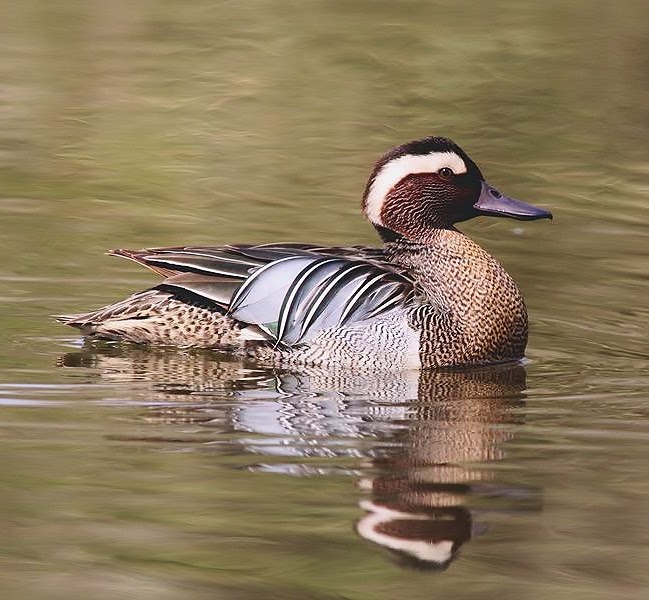 |
| Photo by Kasia Someya (Internet Bird Collection) |
Common name:
garganey (en); marreco (pt); sarcelle d’été (fr); cerceta carretona (es); kräkente (de)
Taxonomy:
Order Anseriformes
Family Anatidae
Range:
This species breeds throughout most of Europe and northern Asia, from the northern Iberian Peninsula and England, north to Finland and east through Turkey and southern Russia into Turkmenistan, Kazakhstan, northern Mongolia and extreme north-western and north-eastern China. Also in the Japanese island of Hokkaido and in southern Kamchatka. They migrate south to winter in sub-Saharan Africa and southern China. In Africa, along the Nile river valley from Egypt to Uganda and southwards into Tanzania and Zambia, and also westwards through South Sudan, southern Chad and Cameroon into Senegal and southern Mauritania. In Asia from India and southern China down to Indonesia.
Size:
These birds are 37-41 cm and have a wingspan of 59-67 cm. They weigh 550-600 g.
Habitat:
The garganey breeds in small, shallow ponds and lakes with abundant floating, emergent and fringing vegetation, and in grass dominated environments, like swampy meadows, flooded fields and shallow freshwater marshes. Outside the breeding season they prefer large freshwater or occasionally brackish lakes, again with abundant floating, emergent and fringing vegetation, and also shallow flood plains, shallow dams, pans and sewage ponds. Occasionally, they also use coastal saltmarshes and lagoons or even marine inshore waters.
Diet:
During the breeding season they are omnivorous, taking molluscs, aquatic insects and their larvae such as waterbugs, caddisflies, water beetles and midges, crustaceans such asostracods and phyllopods, worms, leeches, young and spawn of frogs, and small fish, but also seeds, roots, tubers, stems, leaves and buds of plants such as hornwort Ceratophyllum, naiad Najas, sedges, grasses and other aquatic plants. Outside the breeding season they are mainly herbivorous, taking the seeds of pondweeds, smartweeds Polygonum, sedges, dock Rumex, wild rice and various grass.
Breeding:
Garganeys breed in March-August. The nest is a shallow depression on the ground, lined with leaves and grasses, usually placed in a meadow under rushes or tall grasses and within 150 m of water. The female lays 8-11 beige eggs which she incubates alone for 21-23 days. The chicks fledge 35-42 days after hatching and reach sexual maturity after 1 year.
Conservation:
IUCN status – LC (Least Concern)
This species has an extremely large breeding range and a global population estimated at 2,6-2,8 million individuals. The overall population trend is decreasing, although some populations have unknown trends. The threats affecting this species include habitat degradation and destruction, agricultural intensification, hunting and predation by invasive species.







